
Edgar Rice Burroughs was an American writer, best known for his prolific output in the adventure, science fiction, and fantasy genres. Best-known for creating the characters Tarzan and John Carter, he also wrote the Pellucidar series, the Amtor series, and the Caspak trilogy.
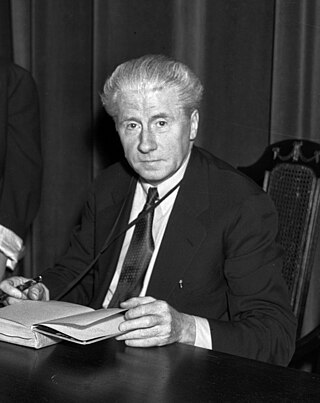
Hugh John Lofting was an English American writer trained as a civil engineer, who created the classic children's literature character Doctor Dolittle. The fictional physician to talking animals, based in an English village, first appeared in illustrated letters to his children which Lofting sent from British Army trenches in the First World War. Lofting settled in the United States soon after the war and before his first book was published.

Doctor Dolittle is a 1967 American musical comedy film directed by Richard Fleischer and starring Rex Harrison, Samantha Eggar, Anthony Newley, and Richard Attenborough. It was adapted by Leslie Bricusse from the Doctor Dolittle novel series by Hugh Lofting, primarily The Story of Doctor Dolittle (1920), The Voyages of Doctor Dolittle (1922), and Doctor Dolittle's Circus (1924).

Doctor John Dolittle is the central character of a series of children's books by Hugh Lofting starting with the 1920 The Story of Doctor Dolittle. He is a physician who shuns human patients in favour of animals, with whom he can speak in their own languages. He later becomes a naturalist, using his abilities to speak with animals to better understand nature and the history of the world.
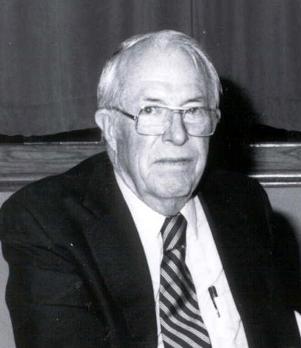
John Stewart Williamson, who wrote as Jack Williamson, was an American science fiction writer, one of several called the "Dean of Science Fiction". He is also credited with one of the first uses of the term genetic engineering. Early in his career he sometimes used the pseudonyms Will Stewart and Nils O. Sonderlund.

Alan Edward Nourse was an American science fiction writer and physician. He wrote both juvenile and adult science fiction, as well as nonfiction works about medicine and science. His SF works sometimes focused on medicine and/or psionics.

The Story of Doctor Dolittle, Being the History of His Peculiar Life at Home and Astonishing Adventures in Foreign Parts (1920), written and illustrated by the British author Hugh Lofting, is the first of his Doctor Dolittle books, a series of children's novels about a man who learns to talk to animals and becomes their champion around the world. It was one of the novels in the series which was adapted into the 1967 film Doctor Dolittle.

The Voyages of Doctor Dolittle is the second of Hugh Lofting's Doctor Dolittle books. Published in 1922, the writing style is aimed at a more mature audience and features more sophisticated illustrations than its predecessor. The novel's scope is vast; it is nearly five times as long as its predecessor and is divided into six parts. It won the Newbery Medal for 1923.
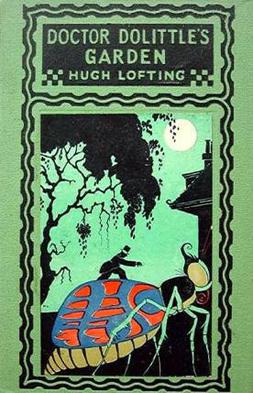
Doctor Dolittle's Garden (1927) is the eighth book in Hugh Lofting's Doctor Dolittle series of children's books.

Doctor Dolittle in the Moon is a 1928 children's book by Hugh Lofting. The book tells the story of Doctor Dolittle who studies mystical animals and plants on the Moon. While on his adventure, his friends on Earth long for his return home.

Doctor Dolittle and the Secret Lake is a Doctor Dolittle book written by Hugh Lofting. The book was published posthumously in 1948, 15 years after its predecessor. Fittingly, it is the longest book in the series, and the tone is the darkest; World War II took place before the book was published, during which Lofting had published his 1942 anti-war poem Victory for the Slain. The book contains passages that almost border on being misanthropic with some very powerful passages concerning war and Man's inhumanity to man.
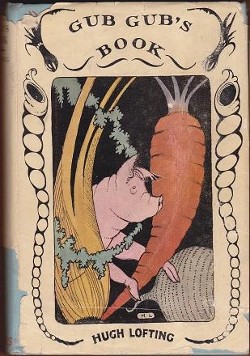
Gub Gub's Book: An Encyclopedia of Food: In Twenty Volumes is a 1932 children's book in the Doctor Dolittle series by Hugh Lofting.
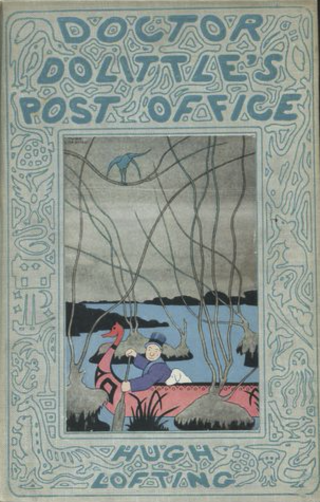
Doctor Dolittle's Post Office is the third of Hugh Lofting's Doctor Dolittle books. Set on the West Coast of Africa, the 1923 book follows the episodic format of most other books in the series. In the beginning of the book, Doctor Dolittle helps to capture a slave trader's ship, then organizes the postal service of a small African kingdom, Fantippo, ruled over by King Koko. Mobilizing migrating birds to carry people's mail from continent to continent, Doctor Dolittle effectively anticipates the 20th century invention of air mail. Over the course of later chapters, he discovers a hidden island populated by prehistoric creatures, gets thrown into another African jail, invents animal alphabets, and defeats at least two armies. Each of the animals in the Dolittle family also tells a personal story. The postal program grows into a worldwide postal and publishing service for the benefit of animals everywhere.

Doctor Dolittle's Circus, written by Hugh Lofting and published in 1924 by Frederick A. Stokes, is set in England sometime between the original story and the later voyages narrated by Stubbins. It was one of the novels in the series which was adapted into the film Doctor Dolittle.
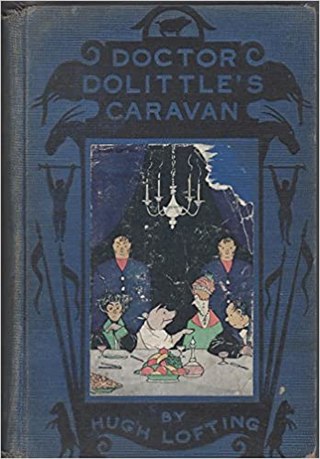
Doctor Dolittle's Caravan is a novel written by Hugh Lofting and published in 1926 by Frederick A. Stokes. It deals with the titular character's bird opera, centering on a female green canary named Pippinella. It is one of many books Hugh Lofting authored about Doctor John Dolittle.
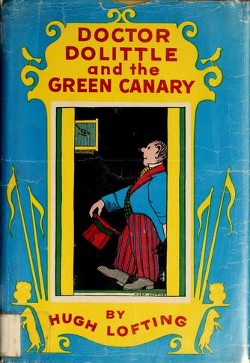
Doctor Dolittle and the Green Canary is a Doctor Dolittle book written by Hugh Lofting. Although much of the material had been printed originally in 1924 for the Herald Tribune Syndicate, Lofting planned to complete the story in the book form but never finished before he died. Lofting's wife's sister, dancer Olga Fricker, completed the book and was published posthumously in 1950. Everything except the first and last chapter are by Lofting.
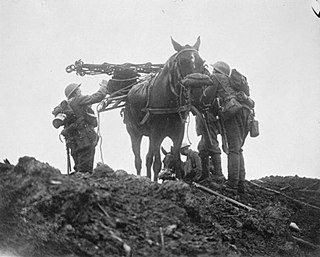
Victory for the Slain is an anti-war poem written by children's author Hugh Lofting, creator of the Doctor Dolittle series. Published in 1942, the poem is based on Lofting's experiences during World War I and one of the strongest literary expressions of his pacifism. It was Lofting's second book of verse but the only work written by him for adults.

Doctor Dolittle's Puddleby Adventures is a collection of short stories written and illustrated by Hugh Lofting, published posthumously as twelfth and last in the Doctor Dolittle series of children's fiction. The stories and illustrations were distributed during the 1920s by the Herald Tribune Syndicate and all may been published in the New York Herald Tribune newspaper, among others. The 1952 collection was their first appearance in book form.

Olga Marguerite Fricker was a Canadian-born dancer, educator and choreographer, a proponent of the Cecchetti method of ballet training. She is also associated with the Doctor Dolittle children's stories of her brother-in-law, Hugh Lofting.



















